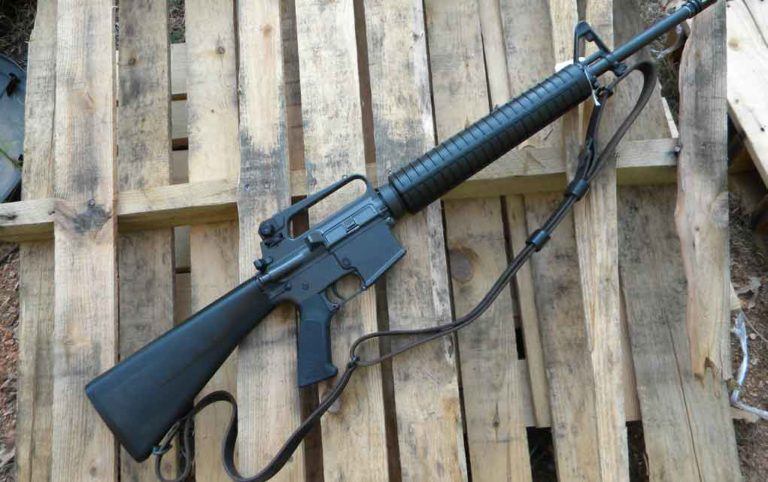
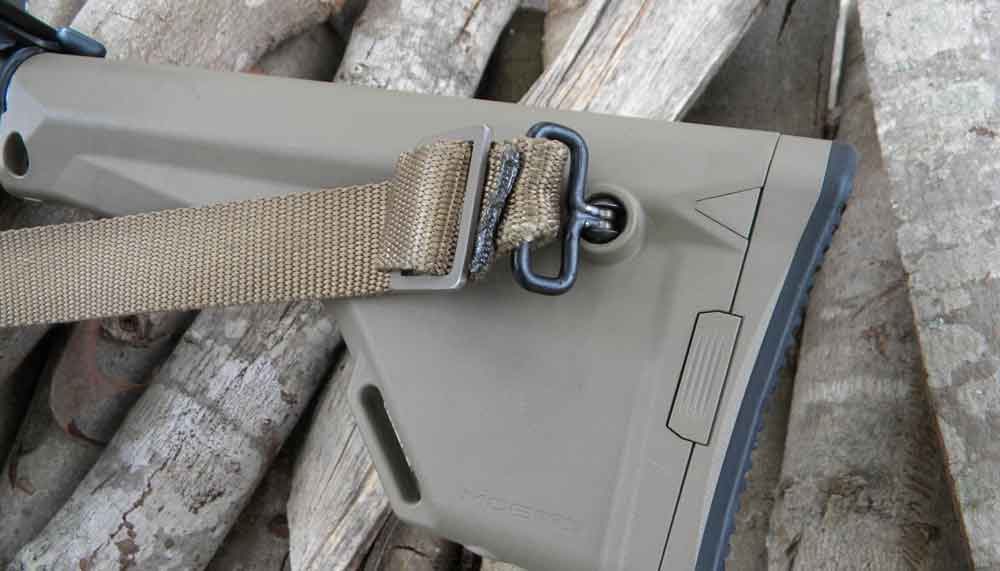
The sling for your carbine is like the holster for your pistol; it’s a mandatory piece of equipment. It’s also one of the most misunderstood accessories out there.
Choosing the Right Rifle Sling Snapshot:
- There are three basic types of slings: shooting slings, carry slings and tactical slings
- Tactical slings, most relevant to the AR, fall into three categories: single-point, two-point and three-point
- Single-point slings offer hands-free operation, quick transitions to the secondary weapon and rapid on/off attachment, but also have disadvantages
- The author feels the two-point is the most versatile option, while the three-point can become cumbersome
There are a variety of slings, and while it may seem simple, choosing the right sling can get complicated. Application and personal preference determine what sling is best for you. Also, keep in mind that you can always swap this gear, changing it out to fit what you are doing.
I highly recommend starting off with a simple two-point sling. Set up correctly, a two-point sling design will do everything you need, without being too complex. After working with the AR and learning how to use it, you can start experimenting with the various types, making an educated decision on what you need or what is required for your specific application. (For details on using the sling and the different carry modes, see the section on Carry Modes.)
Shooting Slings
Shooting slings are traditionally made of leather. The support arm is looped through the sling to create a more stable firing position, but only when the support elbow is resting or braced against something. For marksmanship, this is a definite advantage. (Jeff Cooper was a major proponent of shooting slings and devoted a whole chapter to this in “The Art of the Rifle.”) The competition variety takes time to loop up, and is normally reserved for matches, such as NRA High Power competition. The exception to this is the Ching Sling, designed by Eric Ching, which is very quick to loop into; however, you rarely see them in use on ARs.
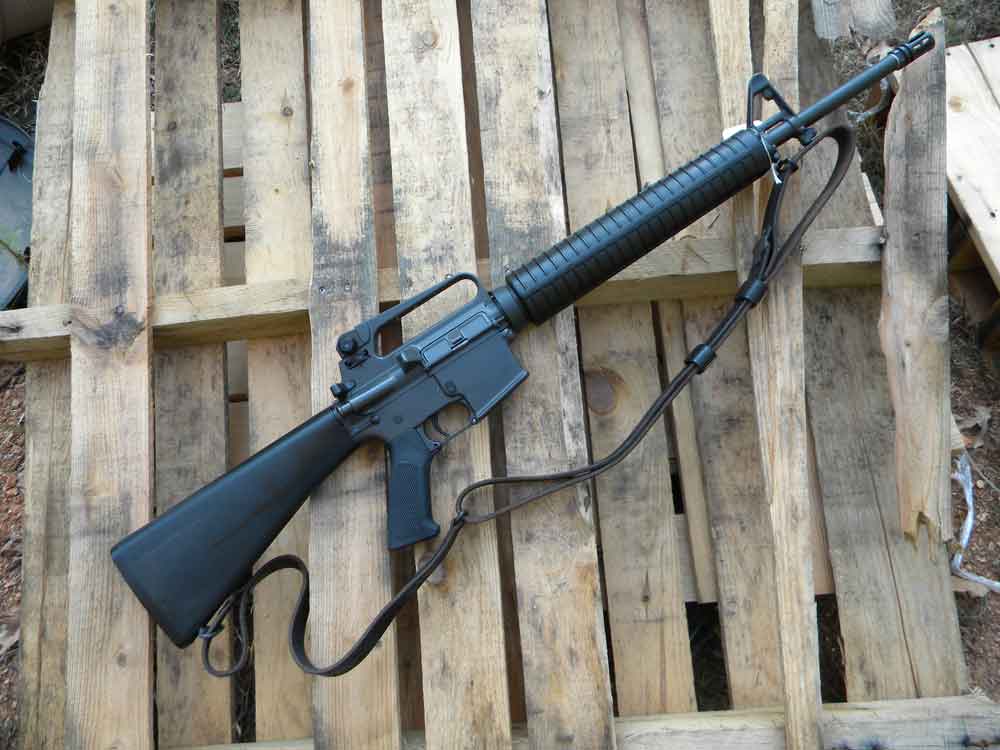
If you are going to work with a shooting sling, looping it up for stability and accuracy, you need to remember that this puts force on the handguard, pulling it downward enough to affect shot placement. With a standard-type handguard, the front fits into a handguard “cap,” which is around the barrel just behind the front sight base. The sling is connected to the handguard. Applying downward pressure to the sling pulls the barrel down. For example, with my stock AR HBAR, looping up in the sling will lower the point of impact, where the bullet hits the target, by about 6 inches at 100 yards.
In order for this pressure not to affect your shot placement, you need a free-floating handguard. This type of handguard isn’t attached to the front of the barrel. This way any pressure on the handguard doesn’t affect the barrel or your point of impact.
Carry Slings
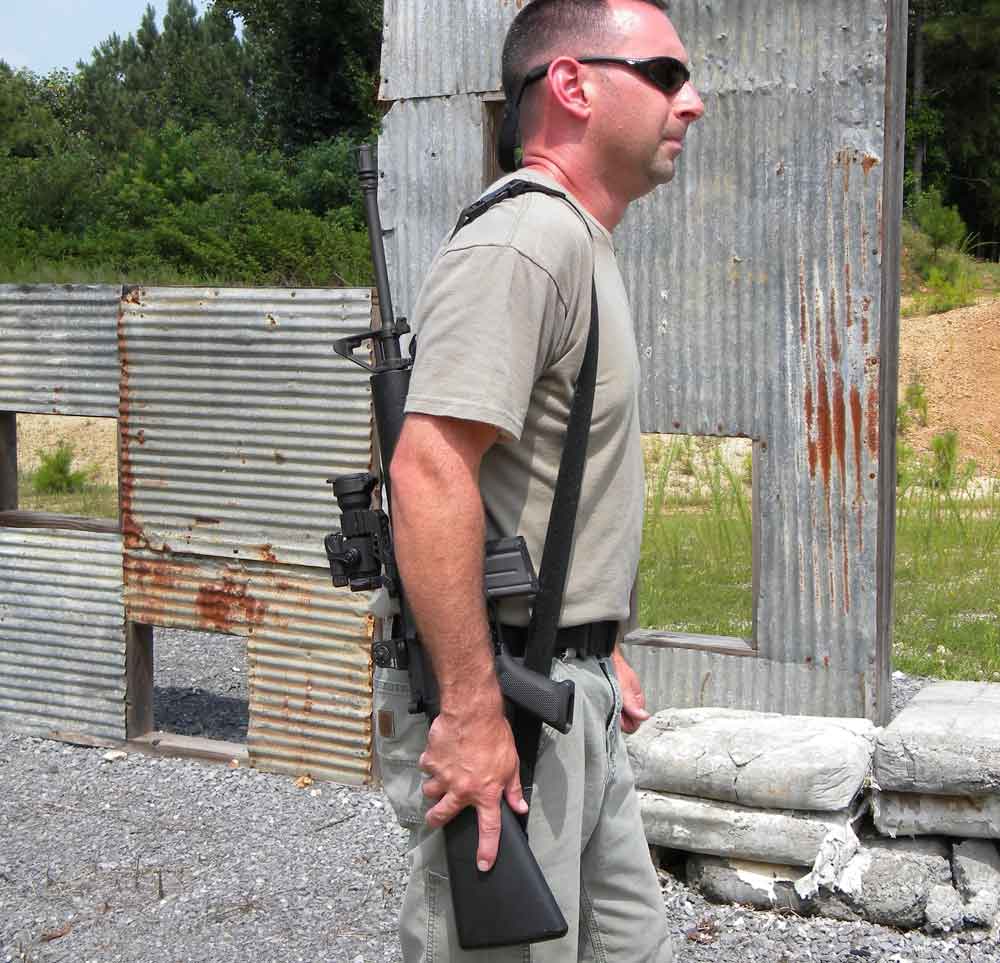
A simple carry sling, or “two-point” sling, is a great choice for general-purpose use, self-defense or patrol officers. When adjusted to the proper length, the two-point sling is extremely versatile. It can be used for “African” carry, slung on the support side of the body with muzzle down, or “American” carry, on the strong side of the body with muzzle up. It can be looped over the neck to free up both hands, “scramble” carry, or around the neck and body, in “tactical” fashion. Add a quick-release buckle so you can get free of the sling quickly if necessary and you’ve got a good thing going.
Tactical Slings
I use the term “tactical sling” for any sling that is designed to be worn around the body, looped over the neck and underneath the support arm. While most people think this is a new thing, the U.S. cavalry used something similar in the mid- to late-1800s to free up their hands for riding. Today’s versions are broken down into three types: single, two-point and three-point.
The advantage of tactical slings is that, with the rifle slung, you have both hands free and the rifle is readily accessible for immediate use. Transitions to the pistol are simplified. Lower the rifle down with your support hand while presenting the pistol, and then with the rifle hanging you have the use of both hands for operating the pistol.
Any time you need both hands free, to climb a ladder or take control of a suspect, you don’t have to worry about what to do with the rifle. Plus, I’ve found that it works really well when I’m taking the dogs for their evening walk. I can control the dogs on their leash and still have access to my rifle.
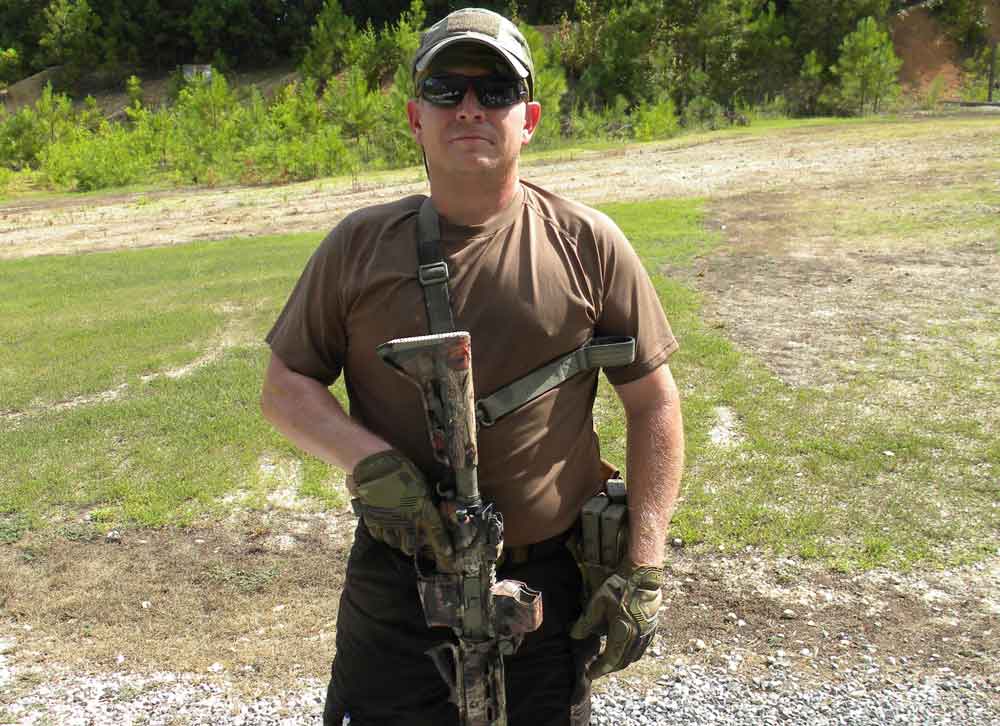
The single-point sling attaches both ends of the sling to one point on the carbine, usually right behind the grip, forming a loop that goes around the body. The sling should fit tight to the body, so most come with an adjustment strap.
The advantage of a single-point sling is that it is easy to attach and detach from the carbine. For example, when it’s time to gear up you loop the sling around your body, then connect it to the AR. Once you’re done, perhaps ready to set the carbine in the rack, you unsnap the sling to release the carbine, leaving the sling looped around your body.
There are a couple of issues to be aware of, however, that I consider to be disadvantages of the single-point sling.
With the sling attached to the rifle right behind the grip, sometimes the sling gets in the way of your hand acquiring a proper grip or manipulating the safety. There is only one attachment point, so when the rifle is hanging and you don’t have the strong hand gripping and controlling the carbine, it will flop around and move about freely. When the AR is hanging on your body, the weight will seek the lowest point, so the sling will rotate around the body, which causes the AR to hang too low.
The stock is lower than the shoulder, requiring more movement to get into a firing position. The muzzle is low, so if you go into a kneeling position you have to take extra care to make sure the muzzle doesn’t dig into the ground. Firing with the muzzle blocked is dangerous and will damage your AR.
As with every piece of equipment there are advantages and disadvantages. You have to train, practice and experiment under all types of conditions until you discover what works best.

The two-point “tactical” sling is basically the same as the two-point carry type, only normally it’ll have features such as a slide buckle for quick adjustment of the length. The two-point sling is the most versatile, and will do about anything you need. It attaches at two points, normally the rear of the stock and the front of the handguard, creating a large loop.
Once the sling is looped around the body, you adjust the length so the stock is just below the pocket of the shoulder. You don’t want it too long, which will allow too much movement when the AR is hanging, and you don’t want it too tight, because that will restrict movement and the firing positions you can use. (The Carry Mode section goes into detail on the various carry or slinging techniques you can use.)
Three-point slings attach to the rifle at the front of the handguard, on the rear on the stock — similar to a two-point — and then have another section of sling that runs between these two sections that provides quick adjustment. For me, this extra section of sling gets in the way of manipulating the AR, inserting or removing the mag, and sometimes gets caught between the strong hand and grip.
Editor's Note: This article is an excerpt from AR-15 Skills & Drills, now available at GunDigestStore.com.

Next Step: Get your FREE Printable Target Pack
Enhance your shooting precision with our 62 MOA Targets, perfect for rifles and handguns. Crafted in collaboration with Storm Tactical for accuracy and versatility.
Subscribe to the Gun Digest email newsletter and get your downloadable target pack sent straight to your inbox. Stay updated with the latest firearms info in the industry.

![Best Concealed Carry Guns In 2025 [Field Tested] Wilson Combat EDC X9S 1](https://gundigest.com/wp-content/uploads/Wilson-Combat-EDC-X9S-1-324x160.jpg)


![Best 9mm Carbine: Affordable PCCs [Tested] Ruger Carbine Shooting](https://gundigest.com/wp-content/uploads/Ruger-Carbine-Shooting-100x70.jpg)
![Best AR-15: Top Options Available Today [Field Tested] Harrington and Richardson PSA XM177E2 feature](https://gundigest.com/wp-content/uploads/Harrington-and-Richardson-PSA-XM177E2-feature-100x70.jpg)
